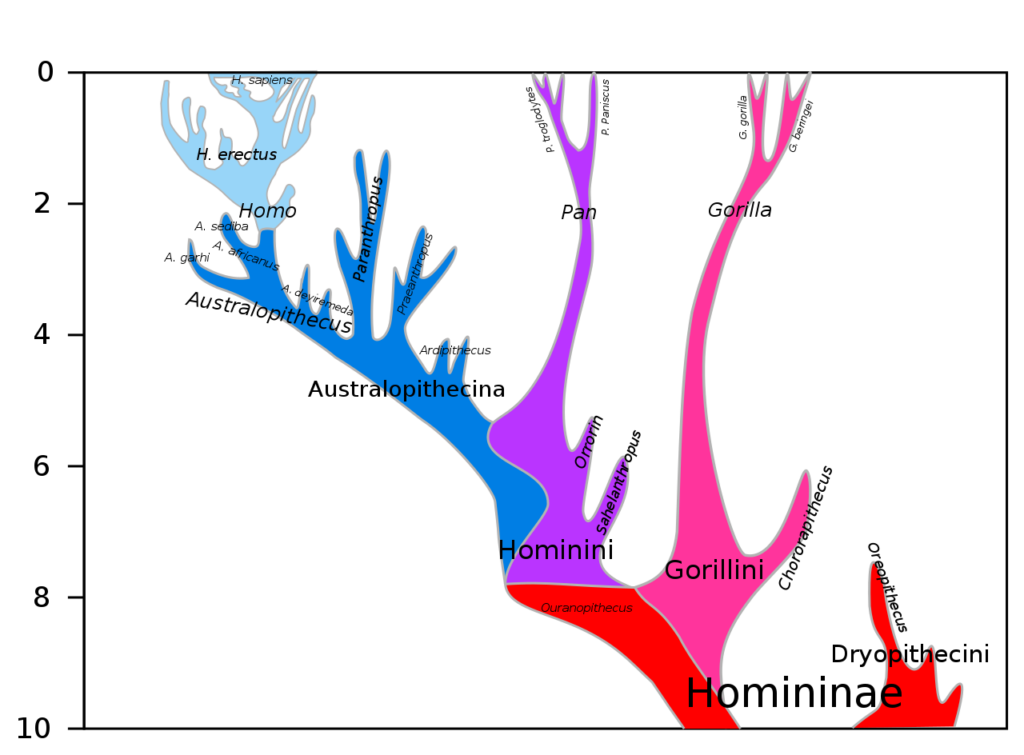The contents of this post are based on Svante Pääbo’s 2010 paper titled “A Draft Sequence of the Neandertal Genome“, published in Science (Green et al., Science, 328, 710, 2010). The study reports genome sequencing of three samples collected from Neandertal bones from Vindija Cave in Croatia, and are carbon dated to be around 38,300 years old.
Based on the existing pieces of evidence, modern humans (Homo Sapiens) and Neandertals (Homo Neanderthalensis) diverged from the common ancestor (Homo Heidelbergensis) around 500,000 – 800,000 years ago. Here is a representation made by Dbachmann of the immediate ancestry of humans and taken from Wiki.

The numbers on the Y-axis represent the past years in millions (mya). If you are wondering who appears on the two sub-branches of the branch, Pan, they are Chimpanzee (P. troglodytes) and Bonobo (P. paniscus)!
The earlier analysis of the mitochondrial DNA of Neanderthal, which was the subject of a publication in 1997, showed a lack of relationship between modern humans and Neandertals. That was insufficient to prove that interbreeding never happened, as other parts of genomes also need to be studied. If you are confused about what these are all about – a typical genome of a multicellular animal has two distinct parts: the nuclear genome and the mitochondrial genome. Most genomes (e.g., humans and other cellular life forms) are made of DNA (deoxyribonucleic acid).
The biggest challenge to confirming the interbreeding was the reason for similarities is the fact that these two have a common ancestor within the last million years. So a similarity between the two groups can be within the variability margins of homo sapiens themselves. To reemphasise the point: even if no interbreeding ever happened, the Neanderthals and Sapiens can still have similarities (e.g. humans and chimps have more than 90% similarities in their genomes).
The study compared the Neandertal genomes to five present-day humans: one each from San (Southern) Africa, Yoruba (West Africa), Papua New Guinean, Han Chinese, and French (Western Europe). To cut the long story, they found that the Neandertals are more closely related (by about 3-5%) to present-day non-Africans than to Africans, suggesting some form of interbreeding. The following graphic represents the findings.
Tailpiece
Most of the similarities and differences are academic. And society should not start equating them with friendship, relationships and identities. They are far more complex and, many times, socially constructed.

